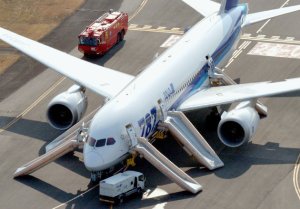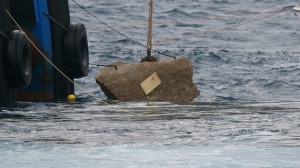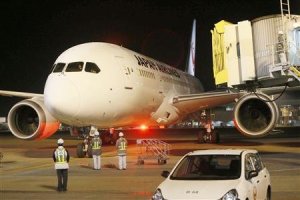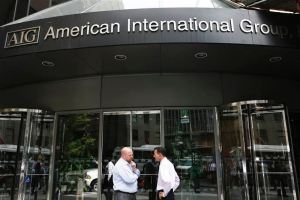I was reading the second edition of Benoit’s Accounts, Excuses, and Apologies and was very surprised to find rather scathing attacks on other crisis communication theories including Corporate Apologia, Discourse of Renewal, and Situational Crisis Communication Theory (SCCT). The names associated with these theories have all written at least one book each on crisis communication. None of them saw the need to attack the other theories. Rather, these volumes are respectful of the other theories and note how they have contributed to the field. Each theory has its own focus and limitations. When I teach, I talk about limitations and use the term constructively. Limits are natural, all theories have boundaries. Knowing the limitations helps students understand when to use a particular theory for an analysis. I take great pains in the courses not to critique the theories because each has value. I would rather focus on what the theory can add to the field and when each can be used most effectively for analysis.
What was most troubling was the inaccurate nature of the attacks. I will speak to SCCT since that is the theory I know the best. The first critique is the a priori nature of crises. SCCT does base its assessment of crisis threats on crisis types. In most organization crises (SCCT is designed for organization crises and is not a generic theory of crisis communication), there are identifiable types. For instance, there are hundreds of product harm crises a year and those are easy to identify. Yes, there will be those crises that are blurred and unclear, that is when crisis consultants are needed and make their money. But most crises are specific types and crisis managers examine the contextual clues to see how the crisis is being defined. Organizations can attempt to redefine the crisis but successes are rare. The example given is deception. The evidence redefined Tylenol as product tampering (the rarest of crisis types) not Johnson & Johnson. The carnage of failed attempts to redefine crises include: Intel, Union Carbide, Audi, and Rail World. SCCT limits its discussion of redefinition to rumors (misinformation crises) and challenges. This is a rather minor point and a clear point of different between the two theories in terms of the emphasis on redefinition.
Second point is that SCCT ignores audience beliefs and attitudes. SCCT is actually driven by attributions of crisis responsibility—an audience factors. SCCT does assess crisis responsibility in its studies. Image Repair Theory has been critiques for being too sender oriented (Lee, 2005) and the latest version does note audiences more. Again, more of a limit than a critique. It is wrong to say SCCT ignores the audience when its key driver—attributions of crisis responsibility—is the audience. The audience is the primary factors that drives the evaluation of the crisis situation. SCCT does not focus on creating different messages for different segments of the audience. The reasoning for that is two-fold. First, today’s media environment means it is difficult to send a message just to one specific segment of the audience without the others seeing it. Hence, there is a great need for consistency in crisis messages. This demands the crisis communicators focus messages on the most difficult segment—the victims. If the managers handle communication with victims well, the other segments will be taken care of as well. Yes, you can find segments in crisis audiences (there are a number of empirical studies that do) but it is problematic creating and disseminating separate messages for them. Second, the messages elements for specific publics is done on the tactical level. For instance, adjusting information for employees differs from that of employees but that is the tactical level of how the strategy is operationalized. Again, SCCT does not focus on the different segments but that is consistent with the assumptions of the theory. Benoit does a poor job of articulating the assumptions that guide SCCT including its roots in Attribution Theory.
Point three is about innocence and guilt. I agree with that point. In fact we have done SCCT research that looks at the effects of guilt or innocence on the use of crisis response strategies. It is more difficult to manage a crisis when an organization is innocent. That is why SCCT recommends denial only when in a misinformation crisis. Denial can be used in challenge crises but the reconfiguration of SCCT (presented in 2013) addresses the unique aspects of the challenge crisis. I think the two theories actually agree on this point but that is not how this point is written.
Point four is about corrective action. SCCT has always included corrective action. However, SCCT considers it a part of adjusting information, not a reputation repair strategy. It is a serious oversight to claim SCCT does not discuss corrective. Simply read any recent use of SCCT and you will find corrective action is part of adjusting information. It is odd this point is missed given that adjusting and instructing information serve as the ethical base response and that is THE initial response recommended by SCCT whenever there are victims or potential victims created by a crisis. This is a serious oversight on Benoit’s part.
Point five and six is about no differences between response strategies. Some studies have, some studies have not. For instance, there are no differences between effects of crisis response strategies in the same grouping on outcomes such as reputation and purchase intention. Also, as in the study cited by Benoit, moderating factors can render the crisis response strategies’ effects moot. An excellent example is the work by Claeys that shows stealing thunder makes the crisis response strategy meaningless. Some using Image Repair Theory have argued that the success of a response was due to specific strategies in the same grouping—see the study on Dow’s crisis response strategies. Again, there is agreement on this point so why is it a critique? However, the study also showed the recommended strategy was superior to the simple information strategy when there was no stealing thunder. The current recommendations for SCCT (as set forth in 2007) have experimental support. Benoit only looks at the 1996 study (initial one) and critiques the reliability of the external control and stability. Those two factors were not used to establish the difference between the strategies. Those measures were organizational reputation (very strong reliabilities that are documented in the recent book of communication measures) and crisis responsibility (again demonstrating strong reliabilities). A number of studies have documented the effect of crisis responsibility on post-crisis reputations and that situational factors do shape crisis responsibility (crisis type, crisis history, and prior reputation). Once more, the central aspects of SCCT and their documentation are ignored. There are also a number of studies that support using the ethical base response and that is can be the most effective crisis response strategy. There are limits to when crisis response strategies have an effect. It is best to document when the crisis response strategies matter and when they do not instead of using a study that examines moderating factors to claim the recommendations are completely invalid.
The final point is truth. That is very subjective and is part of the revised discussion of challenges. SCCT is built for organizational crises that evolved from operational concerns. There is or is not a product harm, a chemical accident, a transportation mishap, etc. There are grey areas of crisis, SCCT argues that rumor/misinformation and challenge fall into that category. Again, this is boundary condition (limit). SCCT was not designed for political crises or celebrity crises, it is for organizational crises. The majority of organizational crises are not about issues of truth. Keep in mind others have documented the danger and failures of trying to argue “the truth” during a crisis. See Hearit’s analysis of the Intel Pentium chip flaw for an example. I would see the debate over truth fitting better with the idea of paracrises. In fact the expansion of SCCT into paracrises addresses this very point. So again I see agreement between the two theories rather than a point of critique.
Fields should have multiple theories, it is good for idea development and advancement of the field. It is pointless to critique theories for differences under the guise of evaluation simply as a way to claim a particular theory is superior to another. They all have their particular value. There are times when Corporate Apologia is insightful or that the Discourse of Renewal is most appropriate. That is what I teach my students. I felt the need to bring up theses points because inaccurate critiques, such as the ones presented on pages 37-40 can be damaging to the field when they mislead students about the theories. SCCT has its limits and I have written about them. Unfortunately, some of the points raised by Benoit are clearly inaccurate and reflect a very selective reading of the research generated by SCCT.



 Posted by prstrategyandapplication
Posted by prstrategyandapplication 




